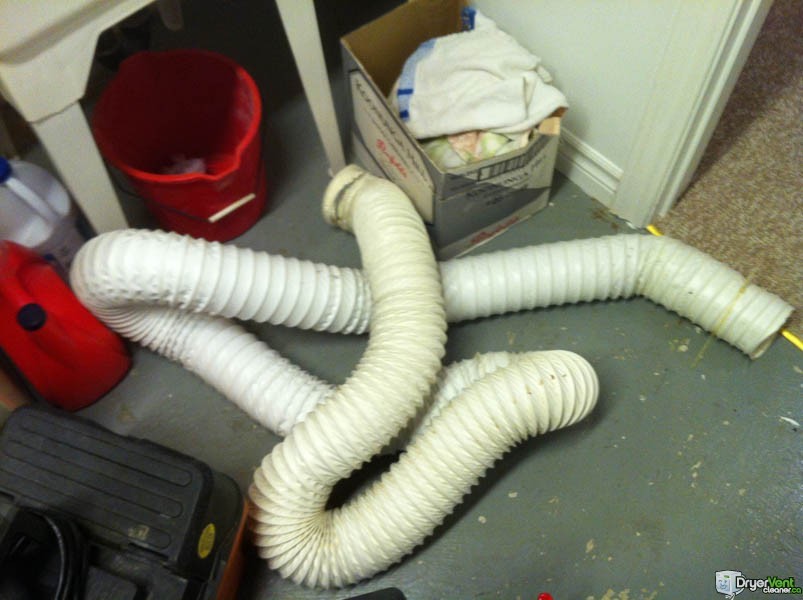 Best Practices for Dryer Vent Installation by Dryer Vent Experts
Best Practices for Dryer Vent Installation by Dryer Vent Experts
Proper dryer vent installation is essential for ensuring the efficiency and safety of your dryer. While it may seem straightforward, even a small mistake in the installation process can lead to significant ventilation problems. A well-installed dryer vent efficiently removes damp air from your dryer to the outside of your home or business. Poor installation, on the other hand, can result in extended drying times, increased energy costs, and an elevated risk of dryer fires.
Why Proper Dryer Vent Installation Matters
When your clothes go into the dryer, the moisture must evaporate and exit through the dryer vent. The process involves heated air passing over your laundry, which is then vented outside. To maintain optimal drying performance, the vent must be installed correctly and cleaned regularly. Neglecting these steps can lead to:
- Longer drying times
- Premature dryer breakdowns
- Higher energy costs
- Increased risk of dryer fires
Proper dryer vent installation is critical for addressing these issues and maintaining a safe and efficient system.
Our Dryer Vent Installation Services
At Dryer Vent Installation, we offer professional services to ensure your dryer vent operates safely and efficiently. Here’s what we provide:
Re-Routing Existing Dryer Vents
We can optimize the route of your current dryer vent to improve efficiency and compliance with modern safety standards. Shortening the vent’s length and ensuring it’s made from solid galvanized metal can enhance dryer performance. Dryer hoses running through drywall, ceilings, or attics must be free of screws and made from approved materials.
Transition Hose Inspection
Most dryers are connected with the wrong type of transition hose. Manufacturers warn against using thin foil or vinyl hoses, which are unsafe. We supply and install the recommended solid metal or semi-rigid hoses to ensure your dryer operates safely.
New Dryer Vent Installation
Our technicians design and install dryer vent systems that comply with building codes, ensuring optimal performance and safety. We use high-quality materials and follow best practices to guarantee long-lasting results.
Avoid White Vinyl Dryer Hoses
 The transition hose, which connects the dryer to the wall, should always be made of solid metal or semi-rigid material. Avoid using thin foil or vinyl hoses as they do not meet safety standards. Many dryers include warning labels advising against these materials. If a dryer fire occurs, using non-compliant hoses could void your insurance coverage.
The transition hose, which connects the dryer to the wall, should always be made of solid metal or semi-rigid material. Avoid using thin foil or vinyl hoses as they do not meet safety standards. Many dryers include warning labels advising against these materials. If a dryer fire occurs, using non-compliant hoses could void your insurance coverage.
Why Vinyl and Thin Foil Hoses Are Dangerous:
- They can ignite during a dryer fire, allowing flames to spread to walls or ceilings.
- Unlike solid metal hoses, they don’t contain fires, increasing the risk of extensive damage.
Instead, use solid metal piping to reduce fire risks. Always secure connections with aluminum tape—never screws or duct tape—as these can compromise safety and efficiency over time.
Dryer Vent Installation Code Compliance
Proper venting is essential, especially for gas dryers, which emit toxic by-products like carbon monoxide. Key guidelines include:
- Vents must lead directly outside.
- Concealed ducting should be rigid metal and no longer than 35 feet (or 25 feet per IRC code), minus allowances for elbows.
- Joints should face the direction of airflow and be free of screws.
- Transition hoses should not exceed 8 feet and must be as short as possible.
- Dryer vents must remain independent—never shared with other vents or chimneys.
- Ductwork should be firmly supported to prevent sagging or disconnection.
By following these dryer vent installation codes, you can ensure the safety and efficiency of your dryer system.
Dryer Vent Challenges in New Construction
Modern home designs often place laundry rooms in central locations, resulting in longer vent routes with multiple elbows. There have been over the years times where the builder forgot to vent the dryer to the outside, some not realized for 20 years, despite replacing the dryer many times! These setups can:
- Reduce airflow, leading to lint accumulation.
- Increase drying times and energy costs.
- Elevate the risk of moisture buildup and fire hazards.
When venting systems are overly complex, dryers may overheat, triggering safety cutoffs or even igniting lint. Proper dryer vent installation minimizes these risks and maximizes dryer efficiency.
Benefits of Proper Dryer Vent Installation and Maintenance
Annual maintenance combined with correct dryer vent installation can:
-
- Decrease drying times.
- Lower repair and energy costs.
- Prevent mildew, mold, and harmful gases from entering your home.
- Reduce the risk of dryer fires.
A professionally installed and maintained dryer vent system pays for itself through improved efficiency and safety. If you’re unsure about your vent’s compliance or condition, schedule a full-service dryer vent inspection with us today!
Professional Dryer Vent Installation Service
If you live in Ontario then call us today for professional dryer vent installation Burlington, Beamsville, Milton, Oakville, Ancaster, Hamilton, Stoney Creek, St Catherines, Grimsby & Niagara On The Lake. We use only the premium materials many that are not available in your local hardware stores. We have reviews on Home Stars (although we do not ask for reviews very well), we also offer dryer vent cleaning and dryer cleaning to ensure complete peace of mind and maximum efficiency for your dryer. If you have issues with any windows in your home our sister company Window Repair Man can help with any window related issues such as foggy glass, window crank replacement, window hinges broken or your windows not staying open. Call us today on 905 966 0838